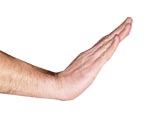

The cysts may then cause ridging or dents in the nail plate of the affected finger.Īrthritis does not have to result in a painful or sedentary life. When arthritis affects the end joints of the fingers (DIP joints), small cysts (mucous cysts) may develop. This is usually due to a combination of bone changes, loss of cartilage, and joint swelling. If arthritis is due to damaged ligaments, the support structures of the joint may be unstable or "loose." In advanced cases, the joint may appear larger than normal (hypertrophic). This is caused by damaged cartilage surfaces rubbing against one another. There may be a sensation of grating or grinding in the affected joint (crepitation). This is due to the body's inflammatory response. The arthritic joint may feel warm to touch. Normally, the thumb does not come to a right angle with the rest of the hand. The next joint closer to the tip of the thumb has become more mobile than normal to make up for the arthritic joint. This patient has lost mobility at the base of the thumb due to arthritis. In patients with advanced thumb base arthritis, the neighboring joints may become more mobile than normal. When the affected joint is subject to greater stress than it can bear, it may swell in an attempt to prevent further joint use. To prevent pain at the arthritic joint, you might change the way you use your hand. Activities that once were easy, such as opening a jar or starting the car, become difficult due to pain. Many people with arthritis complain of increased joint pain with rainy weather. Pain might be made worse with use and relieved by rest. In advanced disease, the joint pain may wake you up at night. Morning pain and stiffness are typical.Īs the cartilage wears away and there is less material to provide shock absorption, the symptoms occur more frequently. The pain may not be present immediately, but may show up hours later or even the following day. The pain often occurs after periods of increased joint use, such as heavy gripping or grasping. Even when properly treated, an injured joint is more likely to become arthritic over time.Įarly symptoms of arthritis of the hand include joint pain that may feel "dull," or a "burning" sensation. Traumaįractures, particularly those that damage the joint surface, and dislocations are among the most common injuries that lead to arthritis. It usually affects the same joints on both sides of the body. Rheumatoid arthritis most often starts in the small joints of the hands and feet. It causes the joint lining (synovium) to swell, which causes pain and stiffness in the joint.

Rheumatoid arthritis is a chronic disease that can affect many parts of your body. It appears in a predictable pattern in certain joints. Also known as "wear and tear" arthritis, osteoarthritis causes cartilage to wear away. Osteoarthritis is much more common and generally affects older people. The two most common forms of arthritis from disease are osteoarthritis and rheumatoid arthritis. When arthritis occurs due to disease, the onset of symptoms is gradual and the cartilage decreases slowly. It is produced by the joint lining called synovium. This smooth surface is lubricated by a fluid that looks and feels like oil. Cartilage covers the ends of bones and provides a smooth gliding surface for the joint. Healthy joints move easily because of a smooth, slippery tissue called articular cartilage.

The most common types of arthritis are osteoarthritis and rheumatoid arthritis, but there are more than 100 different forms. Simply defined, arthritis is inflammation of one or more of your joints.


 0 kommentar(er)
0 kommentar(er)
